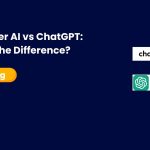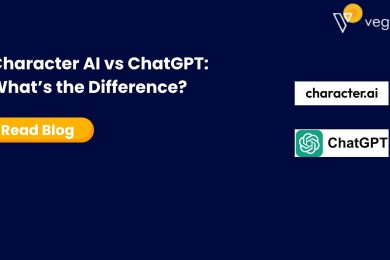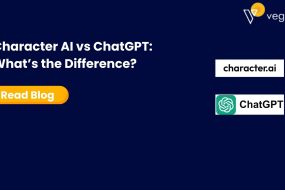
Large language models like OpenAI’s GPT-3 and PaLM are revolutionizing what AI systems can do with human language. They demonstrate impressive capabilities like generating text, answering questions, and having simple conversations. However, these models also raise ethical concerns around bias, transparency, and inappropriate use. In this blog post, we will break down the details of GPT-3 and PaLM, compare their performance and applications, and discuss some of the key ethical issues surrounding them.
Importance of language models in AI
Language models are very important for artificial intelligence and natural language processing capabilities. A language model is essentially a probability model that can predict the likelihood of sequences of words. They are trained on vast amounts of text data and learn the grammatical rules and statistical relationships between words. Higher-quality language models that can make more accurate predictions are key to enabling conversational AI systems, machine translation, text summarization, question answering, and other natural language applications. As language models become larger and more sophisticated, trained on trillions of words instead of billions, we are seeing exponential leaps in their performance and capabilities.
Large language models like GPT-3 and BERT have achieved human-level competency on certain language tasks and enabled new capabilities like generating text summaries, answering complex questions, and assisting with writing. However, language models also face challenges in terms of bias, correcting mistakes, and generating nonsense text. Improving language models to be more accurate, robust and context-aware continues to be an important area of research.
Advances in language models will likely be one of the most impactful developments of artificial intelligence in the coming decade, powering chatbots, virtual assistants, and other conversational AI systems that integrate deeply into people’s lives.
The role of language models in natural language processing (NLP)
Language models play a crucial role in natural language processing and understanding human language computationally. Natural language processing (NLP) refers to the branch of artificial intelligence focused on teaching machines to understand, process, and generate human language. At its core, NLP relies on statistical models that can capture the patterns and structures inherent in language. Language models are a type of statistical model that is trained on massive amounts of text to learn the statistical properties and grammar rules of a language. They serve as a foundation for more advanced NLP tasks like part-of-speech tagging, text classification, sentiment analysis, question answering, machine translation, and conversational AI.
As language models improve, becoming larger, more robust, and better able to predict the next word in a sequence, they enable huge leaps forward in NLP capabilities. Language models help machines understand the context and meaning behind words and sentences, which is essential for tasks that require comprehending human language at a deeper level. However, language models still face challenges dealing with complex linguistic phenomena like ambiguity, common sense reasoning, and multi-sense words. Overcoming these challenges will be crucial for creating truly intelligent language technologies.
What is OpenAI GPT-3?
GPT-3 stands for Generative Pre-trained Transformer 3. It is a large language model created by the research company OpenAI. GPT-3 uses a new machine learning technique called transfer learning with a massive neural network. The model was trained on a huge dataset of internet text.
GPT-3 can generate text that looks very human-written at a basic level. Many believe it has achieved a breakthrough in machine learning that could quickly change many industries. However, there are also ethical concerns. The AI may generate toxic, harmful, or biased content because it was trained on internet data reflecting human biases. It also has the potential to automate jobs currently done by humans.
Despite its promise, many experts argue GPT-3 still lacks common sense reasoning. The AI struggles with tasks requiring nuanced thinking like comprehending complex questions. It can also give inconsistent or incoherent answers at times. Overall, GPT-3 represents progress towards more powerful conversational AI systems. But there are still limitations and ethical questions that need addressing to ensure the technology develops responsibly.
What is PaLM (Pathways language model)?
PaLM is a large natural language model created by OpenAI. It has a knowledge base containing information from thousands of documents on the internet. This allows PaLM to demonstrate skills like fact-checking, summarizing, and reasoning based on its knowledge.
However, large language models like PaLM also pose risks. They can generate misleading statements or harmful content. They also have the potential to spread misinformation at scale. This is concerning since many people trust what they read online.
OpenAI has taken steps to mitigate some of these risks with PaLM. They conducted safety and societal impact analyses. They limit PaLM’s access to certain knowledge, restrict certain uses through their API, and monitor for harmful uses.
Still, large language models like PaLM present new ethical challenges due to their capabilities and potential impact. Researchers are working to improve the safety, transparency, and accountability of such models going forward to ensure they are developed and used responsibly.
Performance Comparison: GPT-3 vs. PaLM
GPT-3 and PaLM are two of the largest and most advanced natural language models. They demonstrate impressive capabilities like generating text, answering questions, and having conversations. However, there are some key differences in their performance.
- Size: PaLM is significantly larger than GPT-3 with up to 200 billion parameters compared to GPT-3’s 175 billion. The larger size enables PaLM to utilize more data during training.
- Knowledge: PaLM has a knowledge base containing information from millions of documents that it can reference during tasks. In contrast, GPT-3 relies solely on the patterns and examples in its training data.
- Accuracy: In many tests, PaLM has outperformed GPT-3 due to its large size and ability to reference facts from its knowledge base. For example, PaLM has been shown to provide more accurate factual answers and summarize text more correctly.
- Stability: PaLM has shown better stability due to changes in its model architecture compared to GPT-3. This makes PaLM more robust and reliable during generation tasks.
- Concerns: Despite their differences, both models face similar challenges around bias, reliability, and potential for misuse due to their capabilities and lack of complete transparency.
In summary, while PaLM is generally seen as more capable due to its larger size and factual knowledge base, both models present similar ethical concerns around responsible development and appropriate use. More research is needed to ensure these language models can be used safely and beneficially.
Use Cases and Applications of GPT-3
GPT-3 is a large language model created by OpenAI that demonstrates impressive capabilities like generating text, answering questions, and having simple conversations. Due to these abilities, GPT-3 has enabled many applications across industries.
- Content creation: GPT-3 has been used to automate content writing like legal documents, emails, news articles, social media posts, jokes, and stories. However, the outputs often need human editing.
- Customer service: Some companies are using GPT-3 to power AI chatbots and virtual assistants to answer customer questions, provide product information and handle basic requests.
- Data processing: GPT-3 has been used to extract information from documents, detect anomalies in data, summarize texts and tables, and convert formats like PDF to Word. However, it still makes errors that require human oversight.
- Code generation: While GPT-3 has shown the ability to generate basic code snippets, it is not at the level of writing full programs yet. It is useful for autocompleting code and fixing syntax errors.
- Research assistance: Some researchers are experimenting with using GPT-3 to formulate hypotheses, analyze data, retrieve information, and generate models to aid scientific research. But issues around reliability remain.
Use Cases and Applications of PaLM
PaLM is a large language model built by OpenAI that has a factual knowledge base containing information from millions of documents. Due to its impressive capabilities and factual knowledge, PaLM enables several applications similar to GPT-3 but with higher accuracy.
- Answering questions: PaLM can answer factual questions by referencing its knowledge base. It achieves higher accuracy than GPT-3 on question-answering tasks due to its knowledge.
- Summarization: PaLM’s knowledge allows it to create more accurate summaries of texts and data compared to GPT-3. It understands the key facts and can filter out unimportant details.
- Data processing: PaLM can extract information from documents, detect anomalies in data, and convert formats. It makes fewer errors than GPT-3 due to referencing its knowledge during tasks.
- Customer service: Some companies are experimenting with using PaLM to power AI chatbots, virtual assistants, and helpdesk applications by answering customer questions.
- Software development: While PaLM has shown the potential to autocomplete code snippets and fix syntax errors, its knowledge base has not enabled it to match GPT-3 in code generation yet.
Future Developments and Research
There are several areas of potential future research and development for both models:
- Accuracy and capabilities – Both models will likely continue to become more accurate, versatile, and capable as they are trained on more data and their architectures evolve. However, issues around reliability and consistency must also be addressed.
- Mitigating bias – Research is needed to identify and reduce biases in both models related to topics like gender, ethnicity, disability, and age. Tracing the sources of bias and modifying training data and algorithms will be necessary.
- Safety and oversight – As the capabilities of these models expand, research into how to govern and regulate them will be crucial. Methods to proactively identify and reduce potential risks and harms are needed.
- Transparency – Increasing the interpretability and transparency of large language models will be an essential research area to build trust and accountability. Methods to “open the black box” of these models must be developed.
- Alignment with human values – Long-term research is needed to define how models like PaLM and GPT-3 can be shaped to better reflect and uphold human values, preferences, and norms. Value alignment will be key for benefitting society.
Overall, responsible development of these generative models will require progress in many areas beyond just scaling parameters and performance. Continued research focusing on issues like reliability, interpretability, oversight, and alignment with human values will be vital to ensuring PaLM, GPT-3, and future language models can be developed and used ethically and for the benefit of humanity.
Conclusion
GPT-3 and PaLM represent major advances in natural language processing and AI. However, like all powerful technologies, they must be developed and used responsibly to maximize benefits while avoiding harm. Issues around reliability, bias, transparency, governance, and values will require continued research and effort to address. With proper oversight, best practices, and ethical guidelines, language models like GPT-3 and PaLM have the potential to positively augment human capabilities and productivity.
However, left unchecked they could also spread misinformation, exacerbate biases, and be used for malicious purposes. It will be up to researchers, businesses, regulators, and society as a whole to ensure these promising technologies ultimately benefit humanity through responsible development and application aligned with human values.











